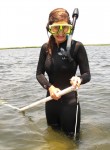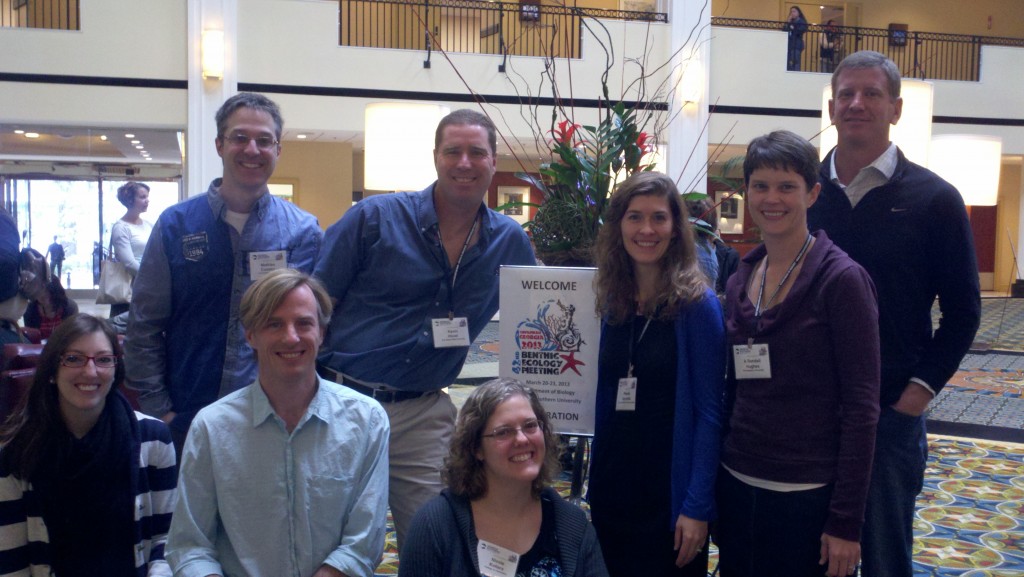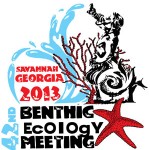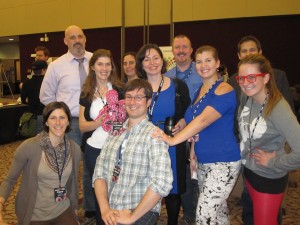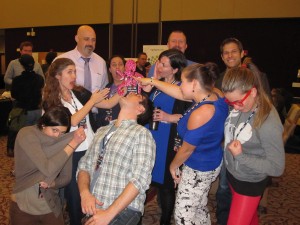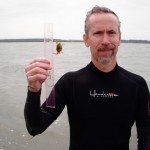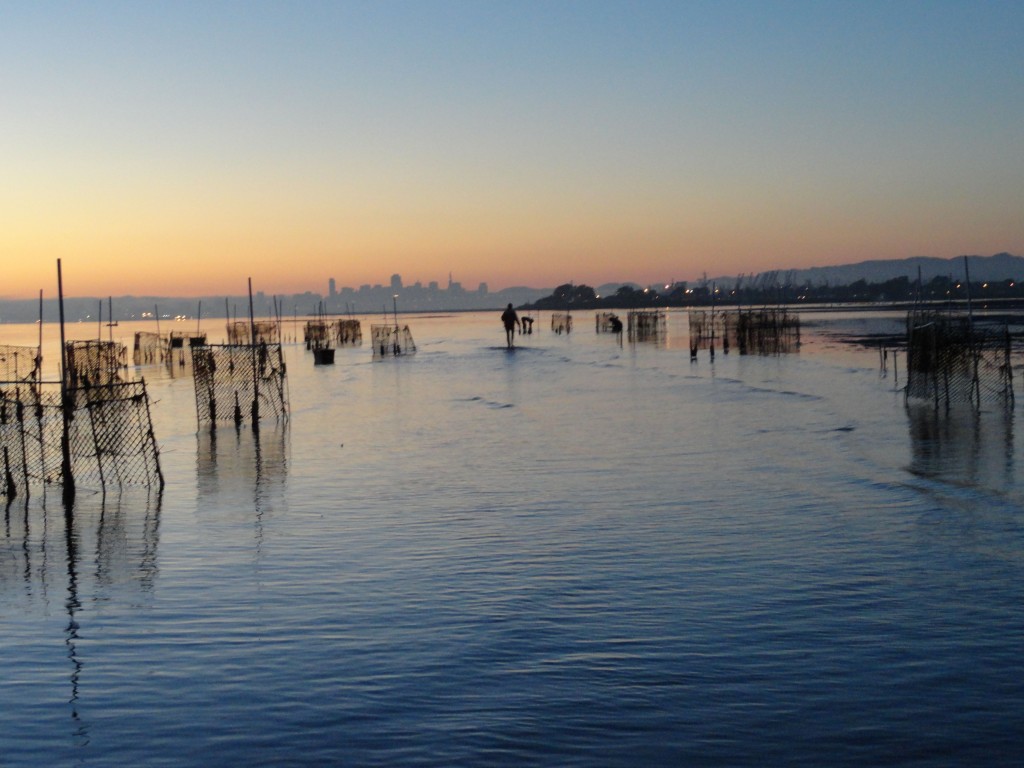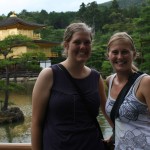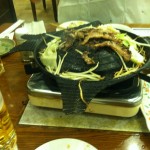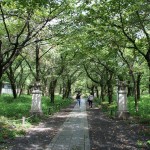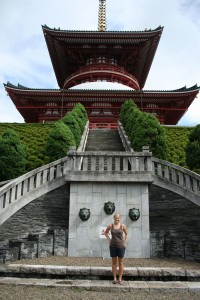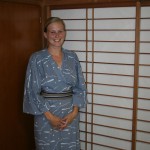I’m a GRAZER baby…
by Pamela Reynolds (ZEN Coordinator)
As a small token of our appreciation for the hard work of all of the ZEN partners (past, present and future!), we present:
“GRAZER”. Turn up the volume and enjoy!
This film is, as everything in ZEN, a collaborative production and we very much appreciate the contributions of all of the ZEN participants. Lyrics were written by Paul Richardson, editing by undergraduate Conor MacDonnell, and lyrics by undergraduate Nick Penthorne. The film features cameos by Emmett Duffy and others in the Marine Biodiversity Lab at VIMS, as well as chorus refrains from many of the ZEN sites (watch the film all the way to the end so you don’t miss this!). The film premiered along with a select few other films on the big screen at the Beneath the Waves Film Festival at the Benthic Ecology Meeting last week in Savannah, GA. Enjoy!
ZEN Benthic Ecology Meeting 2013
by Pamela Reynolds (ZEN coordinator)
Meetings are wonderful excuses to meet up with old friends, make new ones, and, of course, talk science! Last week I presented some of the emerging results at the annual Benthic Ecology Meeting in Savannah, Georgia. The meeting was a great opportunity for many of the ZEN partners to network with each other and other attendees of the meeting, which focuses on marine ecology research along the East and Gulf coasts. Drs. Mathieu Cusson (Quebec), James Douglass (Massachusetts/Florida), Kevin Hovel (California), and Erik Sotka (North Carolina) were all in attendance, along with two new ZEN partners, Drs. Randall Hughes (Massachusetts) and Joel Fodrie (North Carolina), two of the ZEN student exchange fellows (Rachel Gittman, Nicole Kollars) and other grad students who have helped with the ZEN research (Jon Lefcheck, Laetitia Joseph). I was excited about the depth and breadth of talks, especially by those presented by the ZEN partners, which ranged from experiments on the role of functional diversity and salt marsh mutualisms, to whether crabs can hear and the effects of seagrass habitat fragmentation on epifauna. (See a full list of talks and abstracts on the BEM website) Additionally, our short music video “GRAZER” was one of 14 films chosen for the main Beneath the Waves Film Festival screening at the conference. I’ll post the film here shortly so check back.
GRAZER debuts at Beneath the Waves Film Festival
by Pamela Reynolds (ZEN Coordinator)
At the Virginia Institute of Science, we are gearing up for this year’s Benthic Ecology Meeting in Savannah, Georgia. We can’t wait to hear what our colleagues are up to, talk science, and watch the films at this year’s Beneath the Waves Film Festival.
Come to the festival on the evening of March 21st to watch our short film, titled “GRAZER”. This film was produced by the Marine Biodiversity Lab at VIMS and features contributions from the ZEN partners as well as undergraduates at the College of William and Mary. It’s our way of saying “thank you” to all of the hard working individuals who’ve dedicated the past two years with us to quantify the role of biodiversity and to understand top-down and bottom-up interactions in eelgrass beds. We’ll be posting the full video on ZENscience.org later this week, so check back!
To get you excited, here’s a short teaser…
Sci-Octopus
Six years ago, on a cold January morning, I attended a cozy gathering on the campus of UNC Chapel Hill of scientists, journalists and educators interested in utilizing online tools to deepen our activities and promote collaborations. Over the years I have watched the conference grow exponentially, encouraging conversation, community, and connections at the intersection of science and the web. This January boasted the largest yet ScienceOnlineConference in Raleigh, NC, and I had the opportunity to meet up with old colleagues, make some new ones, and sing more than one sea shanty. The Ocean Bloggers were by far the biggest (and loudest) contingent at the conference, and will be holding their own spin off SciOnline: Oceans conference in October. In addition to headliner talks by the social media specialists at the NASA Jet Propulsion Laboratory, and discussion on topics ranging from managing your online persona, ‘doing’ outreach and citizen science, to rethinking peer review and science deficits and denials, along with blitz sessions on everything from mobile apps for the lab to dog cognition – there was something for everyone to get involved in. Looking forward to SciOnline 2014, although next year I may opt for the SciOnlineLIVE version and even further embrace employing online tools to engage with the wider science community.

The conference had some great book giveaways. A colleague and I received copies of the R Cookbook, which will undoubtedly be useful for analyzing all the ZEN data that keeps coming in!
Duffy Receives Outstanding Faculty Award
It was announced today that Dr. Emmett Duffy is one of the 2013 recipients of the Virginia Outstanding Faculty Awards. This honor recognizes excellence in teaching, mentorship, research and service.
In response, Emmett says: “Receiving the Outstanding Faculty Award is of course a huge thrill for me. One reason is that it’s allowed me to spread the word about the ZEN partnership and project (see the College of William and Mary’s video here) and to highlight some of the cool things we’re doing. Honestly, I think ZEN is the most exciting science I’ve ever done, and we have our large group of motivated partners, and especially Pamela Reynolds, to thank for that. There will be more to come soon since we’re in the thick of data analysis and some intriguing results are emerging. Stay tuned!”
Welcome to ZEN
ZEN is a collaborative partnership among ecologists throughout the northern hemisphere conducting coordinated research in beds of eelgrass (Zostera marina) to tackle big questions about how biodiversity, climate change, and natural variability across the globe influence ecosystem structure and functioning. ZEN’s primary funding comes from the National Science Foundation, but benefits from in-kind support from partner institutions throughout the world. Continue Reading
Winged Grazers Mow Down Eelgrass in San Francisco Bay
By Pamela Reynolds (ZEN Coordinator)
Here at ZEN, when we use the word “grazer” we typically mean the small crustacean and gastropod invertebrates that live on and eat the algae (and sometimes the eelgrass) at our estuarine field sites. But for our partners at the Romberg Tiburon Center For Environmental Studies in California, grazers come with webbed feet, a hiss and a honk.
In San Francisco Bay migrating Canada geese mow down eelgrass beds and may help drive the persistence of separate perennial and annual growth forms within the same bed, says laboratory technician Stephanie Kiriakopolos who studied Zostera marina life history traits for her master’s thesis under ZEN partner Dr. Kathy Boyer at San Francisco State University.
Want to see the geese in action? Check out this video from Stephanie, and the nifty cages the San Francisco ZEN team constructed to keep these winged grazers out of our experiments.
Thankful for my day job
by Pamela Reynolds, ZEN Coordinator
This past week in the States we celebrated the Thanksgiving Holiday, which encouraged me reflect on all that I am thankful for – family, friends, and great colleagues near and far!
Continuing along the theme of creative collaborators, a film recently sent to me from grad student Ross Whippo in ZEN partner Dr. Mary O’Connor’s lab at the University of British Columbia in Vancouver, Canada, reminds me what a great career I have as a marine ecologist. What does your lab do?
Science is Creative
by Pamela Reynolds, ZEN Coordinator
Coordinating the ZEN is awesome. Not only do I have the opportunity to interact with incredibly smart and wonderful researchers across the globe, but I am constantly impressed with their creativity and talent. From writing marine ecological haikus to crafting algae and sea creature art, the ZEN partners continue to surprise me.
Here’s a video recently sent to me by Eduardo Infantes, a postdoc with Per Moksnes’ who assisted with the ZEN projects this past summer in Sweden. This video produced by Eduardo shows how the Swedish team used the experimental protocols and materials we sent them from VIMS to implement an experiment testing for predator effects in eelgrass beds at their field site in Gullmar Fjord. The video features Drs. Moksnes, Johan Eklov and Lars Gamfeldt, and grad student Jonas Thormar at the Kristineberg Marine Station on the west coast of Sweden. Just think how much shorter and more exciting scientific papers could be if they all included links to online video methods with fun soundtracks like this!
I’ll let Eduardo and some of the other ZEN scientists tell you in more detail about the experiment (affectionately called the “Podsicle” approach) in another blog post. Until then, enjoy the movie!
North and South Unite! A 4-day epic adventure across Japan
by Nicole Kollars and Rachel Gittman (ZEN graduate student fellows)
With the lab processing finished in Akkeshi (see Rachel’s blog “Sayonara Hiroshima”) we said goodbye to our ZEN colleagues and began a whirlwind sight-seeing adventure of the Japanese countryside. We must confess that we were a little intimidated at first. We relied so much on our new friends to translate for us and explain Japanese customs that venturing out on our own to explore the country was a little scary. Equipped with a pocket dictionary, a few maps, and a Japanese rail pass we boarded the train at the Akkeshi station excited and full of anticipation for the sights and sounds that were ahead of us.
First-stop: Sapporo!
After a 5-hour train ride across the beautiful, green hillsides of Hokkaido, we made our first stop in Sapporo. Sapporo is the largest city on Hokkaido and is most famous for its breweries. That night we stopped at the Sapporo Beer Factory for a lovely feast of fresh lamb and vegetables that were brought out raw for us to cook over a heated grill right at the table. We enjoyed the delicious food and beverages while talking about our research, life as a graduate student, and our plans for the upcoming semester.
The next morning we toured the botanical gardens of Hokkaido University. It was a little late in the season to see the flowers in bloom, but the pathways through the woods were beautiful. However, we quickly learned that Rachel’s injured ankle was not up for the task. A few days before, Massa-san had taken us to the intertidal to show us the different types of eelgrass found in Akkeshi Bay. Rachel had twisted her ankle in the rocks and the squeezing of the waders we were wearing had only intensified the injury. We decided that the ankle definitely needed some doctoring before we continued our walking explorations, which was an adventure in itself. It took some trial and error in communication while asking for directions, but we finally made it to a drug store to buy wraps and bandages. Rachel looked forward to the upcoming train ride to rest.
A “Harry Potter” train ride
We were fortunate enough to have the opportunity for an experience that not many tourists enjoy – the 22-hour Twilight Express train ride from Sapporo to Kyoto. This train travels along the Sea of Japan down the entire coastline of the main island of Honshu. It was very difficult to get tickets for this train. It is popular among the Japanese during their vacation time and Hori-san had to be very insistent during a conversation with the booking agent to ensure we had reservations. We are so grateful for his effort! The coastline was spectacular, especially as the sun began to set. Our eyes were glued to the window as the train reached the more southern towns and villages. We had excellent accommodations for the journey in a shared compartment with room for 4 people. We shared the room with an older man who did not speak much English but was very kind and insisted that we see the “Golden Pavilion” when we stopped in Kyoto.
Temples, Bamboo, and Geisha
Kyoto is known as the cultural capital of Japan. We only had 20 hours to see as much of the city as possible and we did not waste a minute of it. After settling into our youth hostel and grabbing a quick lunch at the “ZEN Café” (!), we put on our sunscreen, grabbed our fans, and began walking through the city. The receptionist at the hostel mapped out a touring path for us and we were not disappointed. Our journey took us through a maze of temples, shrines, gardens and shops. In the evening, we ended up in the Geisha district of Gion and saw a Geisha cultural performance at a local theater. The show involved a traditional tea ceremony, harp-playing, dancing, and short plays. Dark had fallen while we were in the theater, and we walked out onto cobblestone streets lit by paper lanterns. After dinner in downtown Kyoto we made our way back to the hotel to ice our ankles swollen from a day of walking. Nicole also had an injured ankle from a sprain involving a slippery staircase a few weeks before.
The next morning we boarded the train for the western part of the city. There we explored a ZEN temple and garden that included a long grove of bamboo. The dense canopy of bamboo was magical and a highlight of our Kyoto experience! From there we ventured to the Golden Pavilion as recommended by our friend on the train. It was well worth the long walk from the train station, the temple was so dramatic in its intensity. After bowls of ramen noodles (these noodles were definitely not your typical college student’s ramen) and green-tea flavored soft serve ice cream, we caught the bullet train to Tokyo.
Our last 24 hours in Japan
With the speed of the bullet train we made it to Tokyo in just over three hours and just in time for rush hour. Our connecting train from Tokyo to Narita (where we would be staying for the night and where the airport was) was packed face-to-face. It took us nearly 2 hours of wading through a dense sea of people with gigantic luggage bags before we reached this outskirt of Tokyo. Exhausted, we both agreed to pay for a taxi to take us from the train station in Narita to our ryokan for the night. A ryokan is a hotel of traditional Japanese style and we slept on futons in a tatami matted room. Across from the ryokan was a beautiful suite of temples, shrines, and gardens – perfect for exploring the next morning before we had to leave the airport.
We arrived at the airport with 6 hours to spare. We wandered around the airport shops, had our last lunch in Japan, and re-pack our luggage to shove in all the extra souvenirs we were bringing back to our families and friends. Finally, it was time to go our separate ways – Rachel to San Francisco and Nicole to Los Angeles to catch connecting flights to our homes in North and South Carolina respectively. Grateful for the journey through Japan together and the friendship forged, we knew we would see each other again soon – whether it be at conferences, while visiting each other’s laboratories, or in another eelgrass bed.
Check out some more images from Nicole and Rachel’s last few days in Japan:

